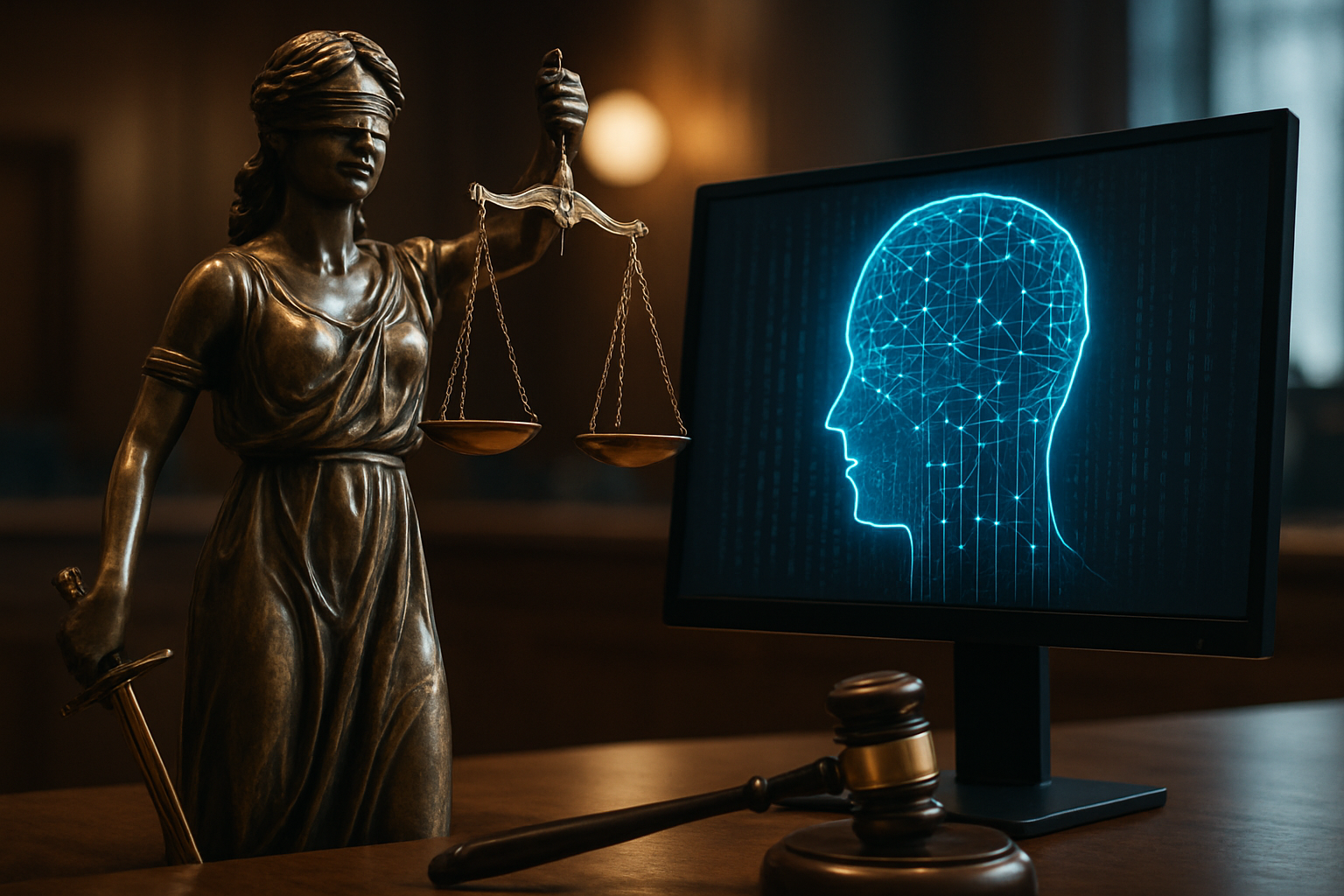Title: The Legal Labyrinth of Deepfake Technology
Introduction: In an era of rapid technological advancement, deepfake technology has emerged as a double-edged sword, presenting both innovative opportunities and complex legal challenges. This cutting-edge artificial intelligence technique, capable of creating hyper-realistic fake videos and audio, has sparked intense debate among lawmakers, ethicists, and technologists alike. As we delve into the intricate legal landscape surrounding deepfakes, we uncover a web of emerging regulations, constitutional considerations, and potential societal impacts that demand our attention.

The proliferation of deepfake technology has been exponential, with user-friendly applications making it increasingly accessible to the general public. This democratization of advanced AI tools has raised alarming concerns about the potential for abuse, particularly in areas such as political manipulation, non-consensual pornography, and financial fraud. As a result, lawmakers and legal experts worldwide are grappling with the challenge of regulating this technology while balancing freedom of expression and innovation.
Legal Frameworks and Jurisdictional Challenges
The rapid advancement of deepfake technology has outpaced existing legal frameworks, leaving many jurisdictions scrambling to adapt. In the United States, several states have taken the initiative to enact legislation specifically targeting deepfakes. California, for instance, passed AB-730, which prohibits the distribution of audio or video with the intent to deceive voters within 60 days of an election. Texas enacted SB 751, criminalizing the creation and sharing of deepfakes with the intent to harm, defraud, or intimidate.
However, these state-level efforts highlight the patchwork nature of current legal approaches, raising questions about the need for comprehensive federal legislation. The challenge lies in crafting laws that are both effective in combating malicious uses of deepfakes and flexible enough to accommodate legitimate applications of the technology. Moreover, the borderless nature of the internet complicates enforcement efforts, necessitating international cooperation and harmonization of legal standards.
Constitutional Considerations and Free Speech
One of the most contentious aspects of regulating deepfake technology is its intersection with First Amendment protections in the United States. The creation and dissemination of deepfakes, even those that are misleading or false, may be considered a form of protected speech under certain circumstances. This constitutional hurdle requires lawmakers to tread carefully, ensuring that any regulations are narrowly tailored to address specific harms without infringing on legitimate forms of expression.
Legal scholars have proposed various approaches to navigate this delicate balance. Some advocate for focusing on the intent behind the creation and distribution of deepfakes, criminalizing only those intended to cause harm or deceive. Others suggest expanding existing laws on defamation, fraud, and copyright infringement to encompass deepfake-related offenses. The ongoing debate underscores the need for a nuanced legal approach that protects individual rights while addressing the potential for societal harm.
Intellectual Property and Right of Publicity
Deepfake technology poses unique challenges to intellectual property law and the right of publicity. The unauthorized use of an individual’s likeness in a deepfake raises questions about consent, ownership, and control over one’s image and voice. While existing copyright and trademark laws offer some protection, they may prove insufficient in addressing the complexities of synthetic media.
The right of publicity, which varies by jurisdiction, may provide a legal avenue for individuals to combat unauthorized deepfakes. However, the application of this right in the digital age is still evolving, and courts are grappling with how to balance personal rights with First Amendment considerations. As deepfake technology continues to advance, legal experts anticipate a surge in litigation surrounding these issues, potentially leading to new precedents and legal doctrines.
Evidentiary Challenges and Digital Forensics
The emergence of deepfake technology has profound implications for the legal system, particularly in the realm of evidence. As the line between authentic and synthetic media blurs, courts face increasing challenges in determining the admissibility and reliability of digital evidence. This shift necessitates the development of advanced digital forensics techniques and the establishment of new evidentiary standards to authenticate digital content.
Legal professionals and forensic experts are working to develop robust methodologies for detecting deepfakes and verifying the authenticity of digital media. However, as deepfake technology becomes more sophisticated, the cat-and-mouse game between creators and detectors intensifies. This ongoing struggle underscores the need for continuous adaptation of legal and technical approaches to ensure the integrity of evidence in legal proceedings.
The Path Forward: Balancing Innovation and Regulation
As society grapples with the legal implications of deepfake technology, it is clear that a multifaceted approach is necessary. Effective regulation will require collaboration between lawmakers, technologists, and civil society to develop adaptive legal frameworks that address the potential harms of deepfakes while fostering innovation and protecting fundamental rights.
Some proposed solutions include the development of digital watermarking and blockchain-based authentication systems to verify the origin and integrity of media content. Others advocate for increased digital literacy education to help the public better identify and critically evaluate synthetic media. Additionally, industry self-regulation and the establishment of ethical guidelines for AI development may play a crucial role in mitigating the risks associated with deepfake technology.
As we navigate this complex legal landscape, it is essential to remain vigilant and adaptable. The challenges posed by deepfake technology serve as a reminder of the need for proactive legal thinking in the face of rapid technological change. By fostering interdisciplinary dialogue and crafting thoughtful, forward-looking legislation, we can strive to harness the potential of deepfake technology while safeguarding the foundations of truth and justice in our digital society.





